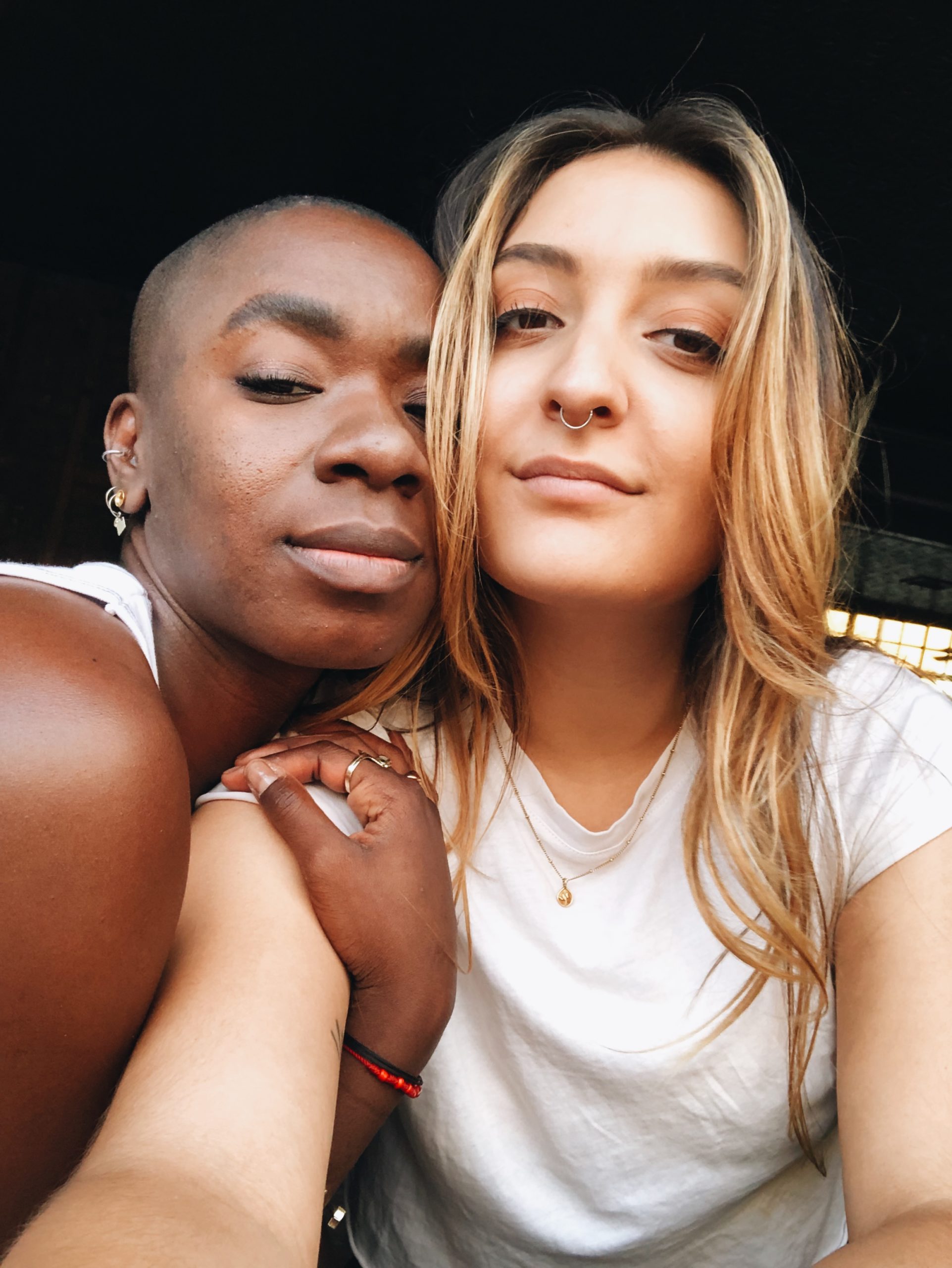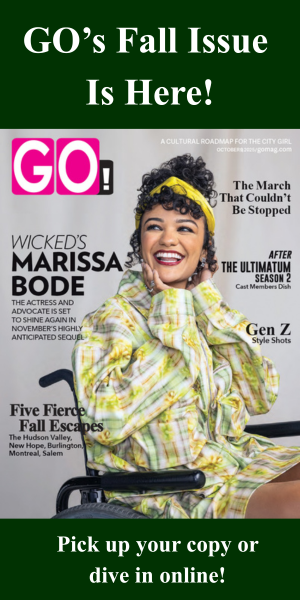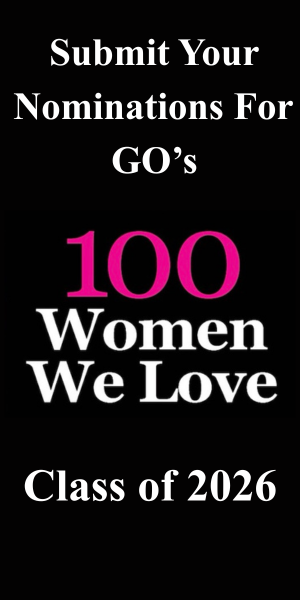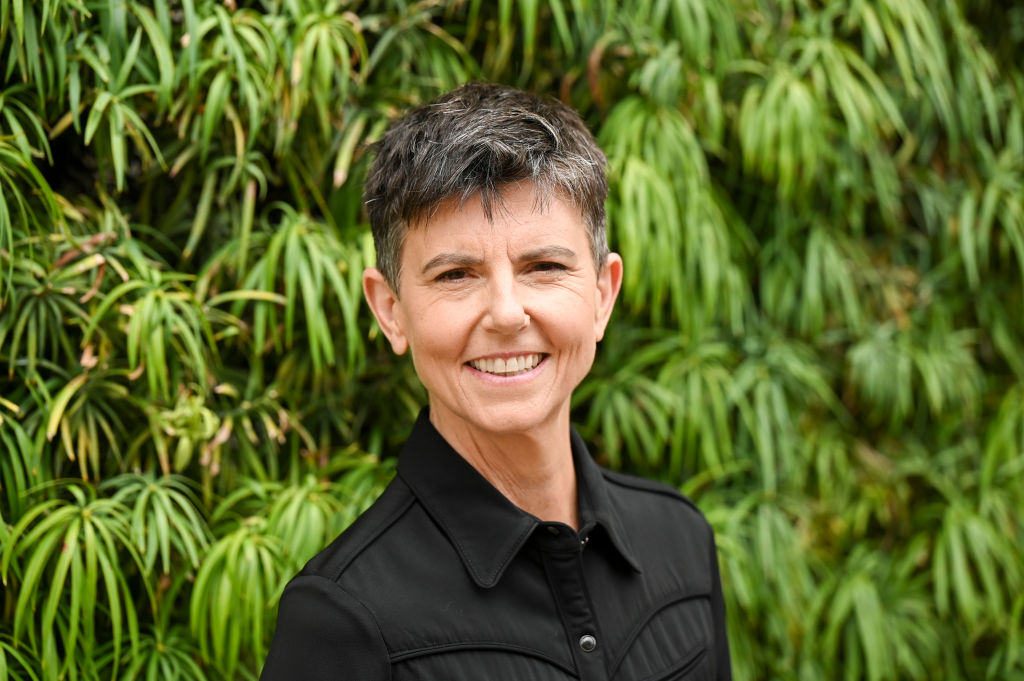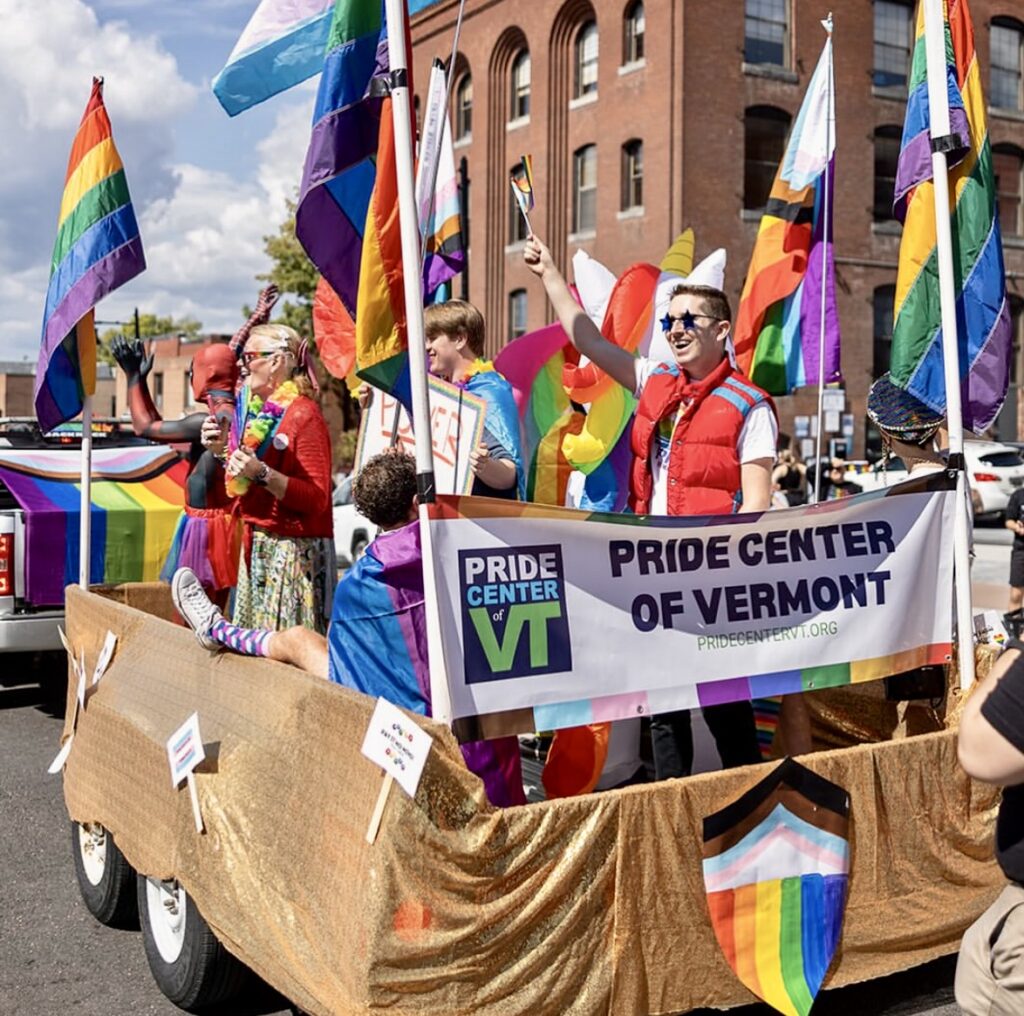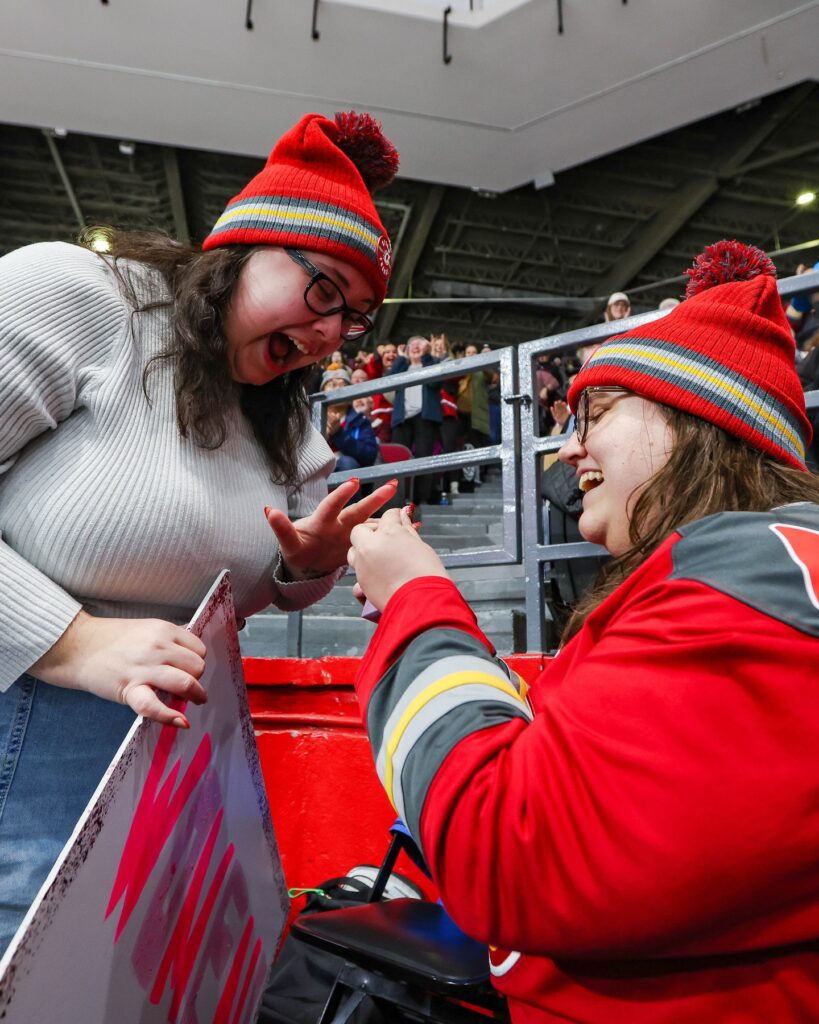Instagram Couple Opens Up About Their “Kiss”
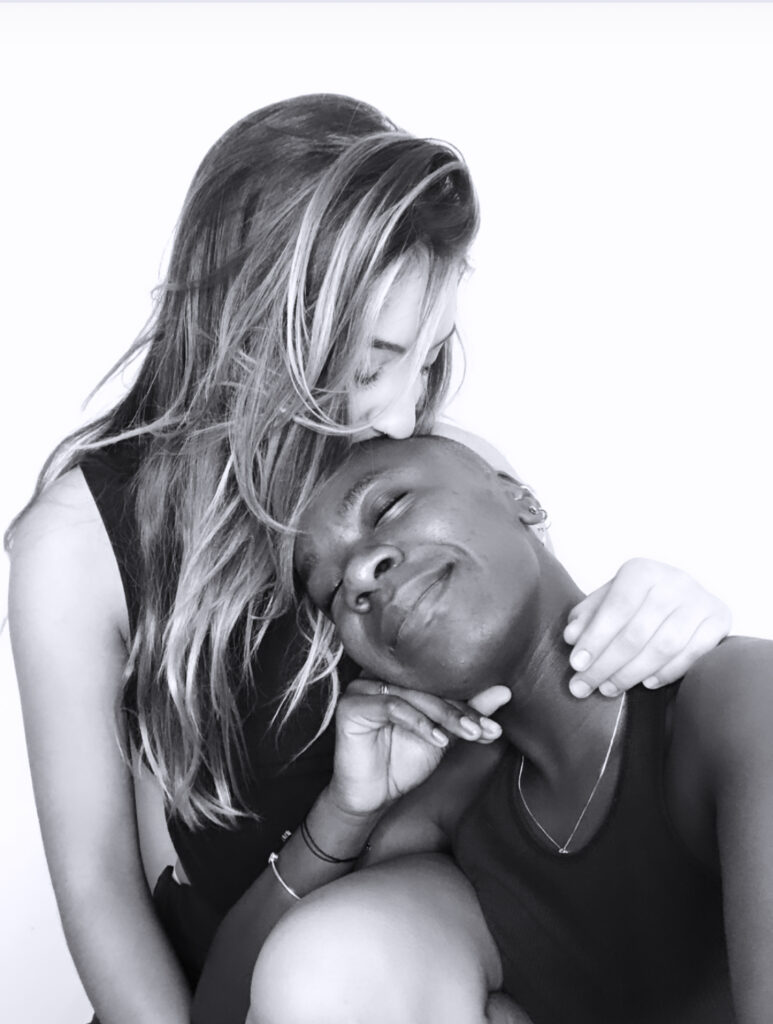
Photographs have an undeniable power to capture moments in ways words cannot. Kisses are especially evocative of heightened emotions, often against the backdrop of trauma and calamity. Alfred Eisentaedt’s “The […]
Photographs have an undeniable power to capture moments in ways words cannot. Kisses are especially evocative of heightened emotions, often against the backdrop of trauma and calamity. Alfred Eisentaedt’s “The Kiss” captured the jubilation of World War 2’s end, although in our current cultural climate its message is far more problematic; the woman in the photograph, Greta Friedman, did not give permission to the sailor, George Mendonsa, to kiss her before their “embrace” was frozen forever on film. The moment was entirely unplanned, spontaneous – and non consensual.
Flash forward seventy-five years. When girlfriends Caitlin Cimino and Caitlin Dabbs hopped up onto a planter outside of Anton’s in New York and began kissing in front of a crowd of spectators after the Queer Liberation March last weekend, the moment was made to go viral. Photos went up on Instagram of the pink poncho-clad couple in the middle of a downpour, kissing passionately, if somewhat precariously, on top of a slippery planter that some passerby had christened with a “Dyke Power” sticker. In some images – the “moment” was captured multiple times by the crowd of cheering onlookers – police cars zipped past.
Everything about the moment was symbolic of our time: a queer, interracial couple kissing at a Pride march merged with Black Lives Matter protests, on top of a slippery, dangerous surface that hardly seemed stable enough to support their dance. And yet the women persisted all the same. And unlike the Eisentaedt photograph, this kiss was entirely consensual, the act of two people genuinely enamored with each other.
I spoke with Cimino and Dabbs – who, somewhat ironically, had been at the Queer Liberation March on a photography assignment with GO – a few days after Cimino posted one of the images to her Instagram. I asked them their thoughts about recent events, whether or not they knew how iconic their kiss was, and, of course, what inspired them to hop up on the planter in the first place. The act, they told me, was entirely spontaneous – the result of reading the weather forecast for the day.
“Caitlin [Dabbs] got hired by GO to take photos at the Queer Liberation March, so we knew we were going and we were checking the forecast” which called for rain, Cimino says. “We went to the Dollar Store and I picked ponchos, and we kept bragging about how important it was that we had ponchos. We were like, ‘Not everyone’s going to have these ponchos,’ like we were really ahead of the game!”
The first drops of rain started to fall when the couple were having drinks at Anton’s after the March. As other patrons scrambled for cover under the awnings, Dabbs and Cimino donned their ponchos and continued to celebrate outdoors.
“I think we were, like, dancing as we were eating, we were like ‘Ponchos!’ and then everyone left,” recalls Dabbs. “It was just you [Cimino] and me just dancing in the rain, like, before we got on the planter.”
“And then I was like, ‘Can you get up here with me?’,” Cimino says of the moment she hopped onto the planter. “And Caitlin [Dabbs] was nervous, it was so cute! She was like, ‘What if we slip?’ And I was like, ‘No, let’s do it.’”
Of the moment, Dabbs recalls that they were not the only couple kissing – others who had taken shelter were thus similarly occupied – but that she and Cimino were capturing the most attention. The rain kept falling, harder, obscuring visibility at times, but the couple continued kissing on the planter, much to the delight of the crowd. At one point, Dabbs recalls, a woman in the crowd offered to swap them their rainbow flag for a bigger one to wave as they continued their dance.
“We just kept making out,” she says, “and the more we were making out, the more people were like ‘Yesss!’ It was crazy and the cars were honking like, we were waving, I started waving the big flag over cars, like, honk for the gay girls up here who are making out in a thunderstorm!”
Still, the significance of what they were doing didn’t really sink in until people started requesting to take the couples’ picture. Eventually, Dabbs recalls, one of the onlookers approached, telling them that they were doing great, and that they were going to make history. “It was kind of surreal,” she says. “We made out for a very long time. At least thirty minutes or more, everyone was cheering and so we were like, we have to be the queer icons in this moment, I guess.”
The trajectory of Dabbs and Cimino’s relationship is no less worthy of a cinematic rendition capturing the zeitgeist of our time. They met through the dating app, her, last May, just before Pride. Although they had briefly parted ways, they reconnected during the quarantine this year. “We really sort of found that we needed each other again,” Cimino, who is an actor and playwright, says. “I’m really grateful to have her.”
If the rekindling of their relationship came at the intersection of Pride and quarantine, then the magnitude of their kiss occurs now at the intersection between Pride and Black Lives Matter. The photograph of the kiss with a police cruiser driving past is particularly evocative of this. “I think that was pretty amazing, because obviously right there, the reason we were there was marching for queer liberation but we kept saying that, like, Pride has been redirected toward Black Lives Matter,” Cimino says. “Those were the roots of why we were there, the fight for Black lives and I think that was also a huge part of it for me, that I’m here relearning and unlearning and fighting for my Black brothers and sisters and fighting for Caitlin, for someone that I love.”
Dabbs, a photographer who has photographed other recent marches, says that their time at the Queer Liberation March was a mixture of emotions, and a reminder of just how far we still need to come even as we celebrate the joy of Pride. This year also highlights the urgent need to speak out for Black lives. “We took the serious route of recognizing the climate we’re currently in,” she says. “And there are moments where I see other black people still saddened when they’re shouting, or emotional when they’re shouting, or their voices crack with it. And that’s still something that is prevalent.”
As a Black, queer woman, she says, “It’s hard to keep walking and saying the names and you go in your head. So at the same time that is beautiful, it’s also a huge reminder of what’s going on for queer people or the LGBTQ community as a whole and for black people.”
For the couple, the quarantine has given them time not only to reconnect, but also to talk about what’s happening in the world, and what they can each do to play their role in the larger social picture and in each other’s lives. “I’ve been trying to be there for her, and she’s been having a lot of emotions kind of surface and trying to work through,” Cimino says. “I am so proud of us, that we are helping each other.”
“Like, you have to trust the hand you’re wrapping, you have to trust the person is not going to let you fall in a storm,” says Dabbs.
While the actual kiss was a celebration of love in the moment, the symbolism behind the act, and what it stands for, is clear to both Dabbs and Cimino. On one hand, it’s a normal act of affection no more or less remarkable than any other kiss. But its context, and its visibility, gives it power.
“There were so many different components of it,” Dabbs says. The flag wrapped around them. The cops slinking by, or seeking cover under the awnings. The torrential rain. Dabbs reports that one commentator on Instagram said the moment captured 2020 in a single image.
But regardless of its symbolic value, the moment was also about two people – who happened to be queer women, and who happened to be an interracial couple – who were just in love. “I didn’t think we were even paying attention to anyone,” Dabbs says. “Like in that moment, I think we were just like in this bubble of, like, we’re so powerful and we are so happy that this is our moment, like, no one can say that they ever did this.”
In our current political climate, where defiance takes the form of rendering visible what’s normal and natural, maybe nothing is as powerful as a simple kiss.



